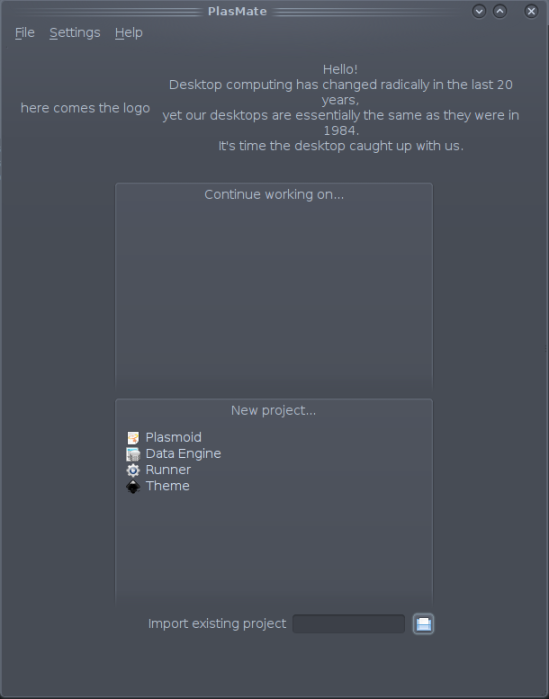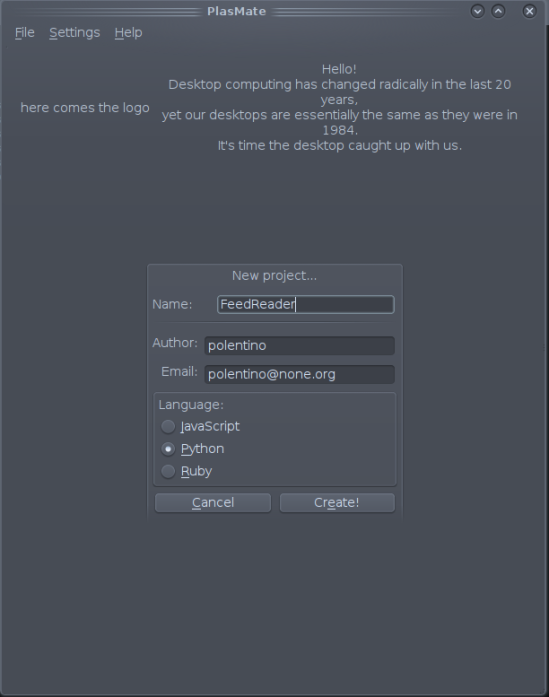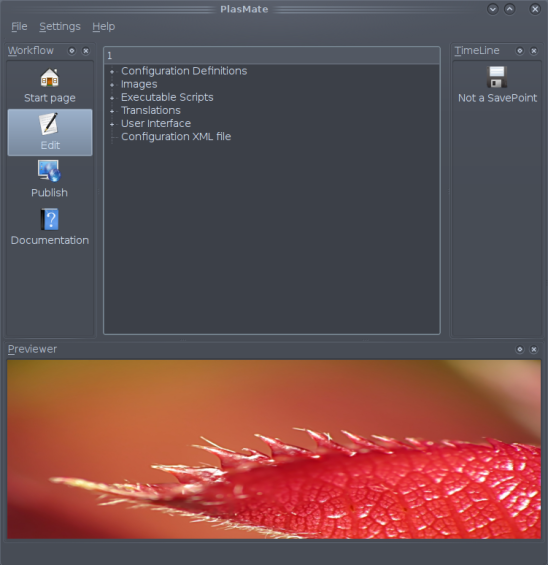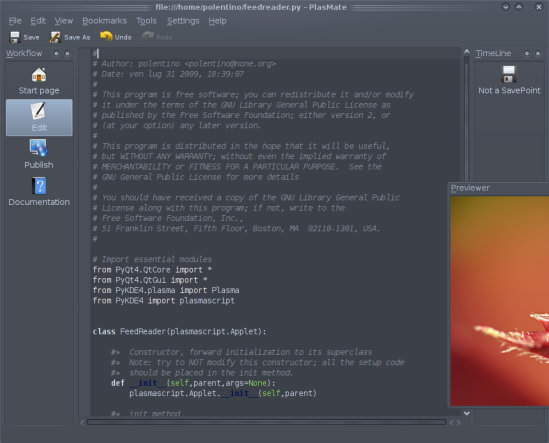Ok, it’s time to post some shots about the application we are developing.
But, first of all, I have to warn you that it’s still in an early stages, so you must be patient and wait an other couple of weeks to see PlasMate fully working =)
Well, let me show you our current PlasMate state.
The Welcome Screen
This is what you see when PlasMate is started:

Ok, we are still looking for a logo =P
By the way, the startup screen is pretty clean and simple, and this is the feeling we want the developer have when using PlasMate.
To start creating your own project, your choices are simply two:
- Resume a previous project, listed under the label “Continue working on …”;
- Start a new project by selecting the sought type from the “New Project” list.
Optionally, you can also import a project, but this function is not yet implemented.
If a new project is selected, it’s necessary to add other infos so a new page is shown.
New Project Page
As you can see, when a new project is selected, PlasMate automatically sets up some commons parameters. It detects your username, and put that
information in the “Author” field; then creates a fake email, and select Python as scripting language for that project. If the developer is satisfied of these default settings, the only action to perform is typing the project name and hit Enter key or “Create!”.
Otherwise, you can modify these parameters as you want and create the project: in this case PlasMate will store the new parameters and, the next time you’ll start a new project, PlasMate will show the last username, email and scripting language selected instead of the default parameters. Cool feature, don’t you ? =)
The Main Window
After starting or resuming a project, the real working interface appears:
On the letf side, you can see a dock widget named “Workflow”. It’s purpose manage system-wide operation, such as show the startup page, the Edit page, allow the developer to pack and publish his project, and show the Documentation.
In the center is visible the Edit page, which shows the project structure splitted in categories, such as Executable Scripts, Images, User Interfaces.
Ops I forgot to tell you something important about PlasMate 😛
When you start a new project, PlasMate takes charge to create the whole directory structure for a scripted plasmoid, as well creating its correspondig metadata.desktop file and filling with the information needed ( package name, language, main script location, author and email ). It also creates a default main script file, named as your project lowercase and, according with the language used, this file is filled with a basical implementation 😀
So no more getting crazy to setup the directories in the right way, writing .desktop files and importing/including the correct modules to get your app working: PlasMate will do all this boring stuff for you, letting you to focus only on one thing: coding 🙂
Ok, coming back to the Edit page, you can select one of the files created by default, or create a new one, and then click on it to start editing.
As regards the TimeLine, I’ll cover it’s usage later in an other post, because its usage is very important and powerful, so it will be described in a separate section.
At the bottom we can find the Previewer, used to display the project during the development process.
The Editor
What are you seeing right now is the default main file ( named feedreader.py ) opened with PlasMate editor. In the header appear the username and email previously defined, and also the date and time of creation of the file but, more important, the basical class structure ( class FeedReader ) and the needed module imported !
Soon I’ll write a deep article about the TimeLine, its usage and why you are encouraged on use and abuse it !!
Stay tuned 😀


